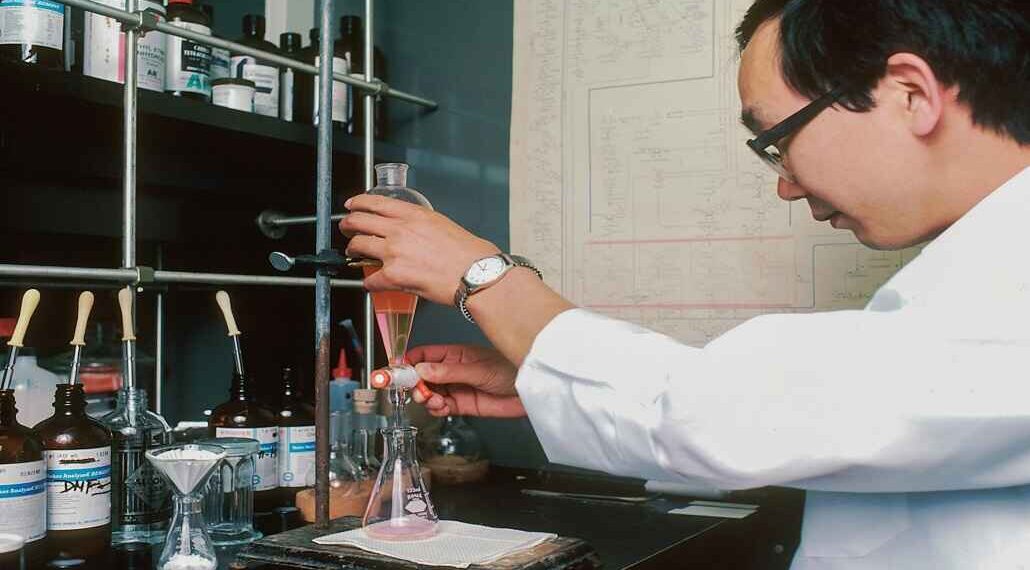A decade of sweeping changes have turned the global pharmaceutical landscape upside down. While once a generator of generics and low-cost active pharmaceutical ingredients (APIs), China is now moving up the value chain in drug development due to its commitment to spending and innovation. One of the more notable results of this transition is China’s emergence as a leader in the so-called “China’s Super Me-Too Drug Development” — an approach that combines incremental innovation with commercial pragmatism.
Global drug discovery has historically coalesced around two poles — breakthrough first-in-class therapies and generic drug manufacturing. The former demands extensive capital, long development cycles, and high-risk profiles, while the latter is plagued by razor-thin margins and commoditization. Super me-too drugs offer an appealing middle ground. First, these are not just more of existing therapies, but rather what may be considered optimized therapy, which is better in efficacy, better in safety, or better in delivery, with lower cost.
China’s rise as a serious player in this space is no accident. It comes from deliberate policymaking, rising scientific sophistication and an ecosystem that is increasingly aligned with global standards. From regulatory reform to R&D investment, the Chinese pharmaceutical landscape has evolved to mimic its U.S. counterpart, and now often leads in fast-follow, high-value drug development.
A key driver supporting China’s rise in super me-too drug development has been its huge commitment to research and development. In 2023, China’s investment in pharmaceutical R&D passed $25 billion, according to the Ministry of Science and Technology, a tenfold increase over the last 15 years. This influx of capital has allowed domestic companies to rapidly expand clinical capabilities as well as invest in technologies such as AI-driven drug discovery, next-generation sequencing, and immunotherapy platforms.
A shift embodied by companies such as Innovent Biologics, Hengrui Medicine, Junshi Biosciences, and BeiGene. Instead of competing with Western behemoths to create first-in-class molecules, these companies have pursued a more prudent path—pursuing drugs that mimic blockbuster therapy mechanisms but come with clinically relevant enhancements. A classic success story is the locally developed PD-1 inhibitor Sintilimab by Innovent in partnership with Eli Lilly — it was released in China at a price almost 75% under that of imported alternatives such as Merck’s Keytruda. But it showed similar efficacy and safety in pivotal trials for non-small cell lung cancer.
Such developments, however, signal more than price competition. They are a part of a broader effort to democratize access to life-saving therapies while establishing a reputation for quality and credibility in international markets. In fact, Chinese companies are increasingly conducting global Phase III trials, publishing results in high impact journals, and submitting to regulatory authorities such as the U.S. FDA and European Medicines Agency (EMA). Toripalimab, another PD-1 antibody from Junshi Biosciences, already has FDA Breakthrough Therapy Designation for nasopharyngeal carcinoma, representing one of the first major steps for a Chinese-developed immunotherapy drug in the U.S. market.
A foundation of this transformation has also been China’s regulatory overhaul. The National Medical Products Administration (NMPA), formerly known for a slow approval process, has implemented ICH guidelines as part of a series of reforms. Consequently, China’s average drug approval time has been cut in half in the past five years. Priority review pathways, conditional approvals and data protection frameworks have played a role in encouraging companies to look for innovation rather than to copies alone.
In addition, intellectual property protections, a longstanding concern of multinational investors, have been significantly beefed up. The 2021 revision of China’s patent law introduced new mechanisms—such as patent term extensions and preliminary resolution pathways for patent disputes—that brought China closer to compliance with TRIPS and strengthened investor confidence in therapeutics developed in China.
Strategically, the super me-too model fits neatly into China’s overarching national priorities. The country’s Healthy China 2030 plan calls for a modern health care system that will provide universal access, while driving domestic innovation. By cultivating a biopharma ecosystem capable of creating better, safer and cheaper versions of critical drugs, China is establishing itself not only as a public health leader for its 1.4 billion people but also as a global pharmaceutical giant.
The rise of super me-too drugs also is a sign of changing attitudes about innovation itself. For the better part of three decades, pharma generally considered innovation synonymous with novelty — fixating on breaking new ground (gaining the right to land on a new molecule), targeting new pathways, and mechanism of action. But healthcare systems around the world are grappling with rising costs, aging populations and disparities in access, changing the very definition of innovation. And in this new paradigm, a drug that builds on an existing standard-of-care — by improving tolerability, for instance, or making dosing simpler — can be as valuable, if not more so, than a new molecule that breaks ground but also proves inaccessible to the vast majority of patients due to cost or availability.
The economics of drug development support this model even more. Bringing a first-in-class drug to market can cost more than $2 billion and the success rate is less than 10%. By contrast, super me-too drugs can exploit existing clinical data, better predict trial results, and shorten development time — often arriving on the market in six to eight years. This faster cycle is particularly exciting for investors and stakeholders involved in emerging markets where time-to-market is as important as the therapy itself.
Going global means understanding intricate regulatory environments, ensuring transparency around data and overcoming lasting skepticism towards the quality and originality of Chinese medicines. Moreover, geopolitical tensions and export controls could affect cooperation between Chinese companies and western players, mainly in such fields as biotech IP and cross-border clinical trials.
The direction is clear. China’s ascendance in super me-too drug development is more than an economic redirection — it’s a philosophical turning point in how the world sees progress in medicine. And in a world where value, speed, and access are the real currencies of innovation, China’s model provides a blueprint that is sustainable as well as scalable.
Conclusion
While the country’s deep-rooted strength remains in volume, as the nation builds upon credibility through scientific rigor, as well as with international collaboration and patient-centric outcomes, its relative position in respect to global pharma will be driven by value, not only volume and has been named as China’s Super Me-Too Drug Development. An era in which China was viewed as a copycat pharmaceutical producer is decisively ceding ground to one in which it is perceived as a competitive innovator — one that is not only keeping pace with the West, but may itself be at the forefront in areas where both pragmatism and precision matter most.


















